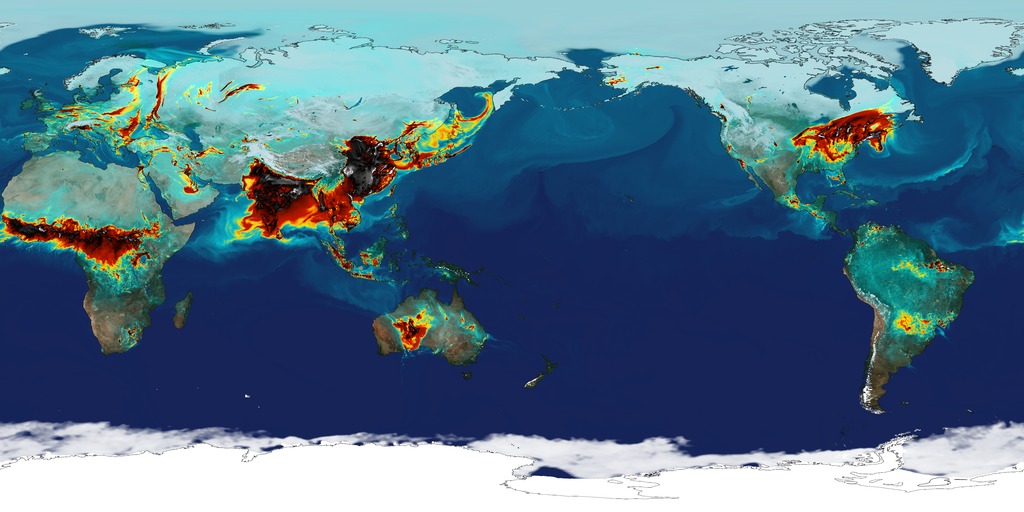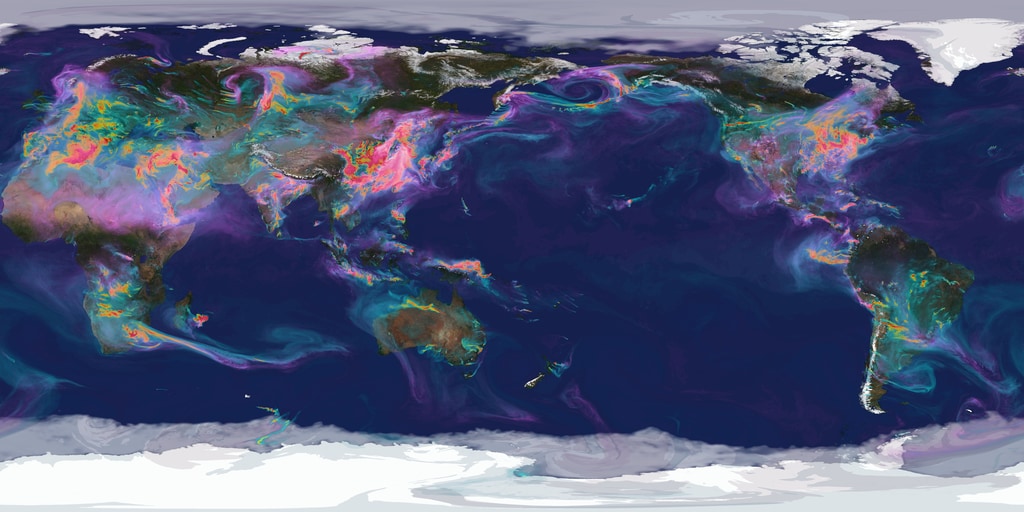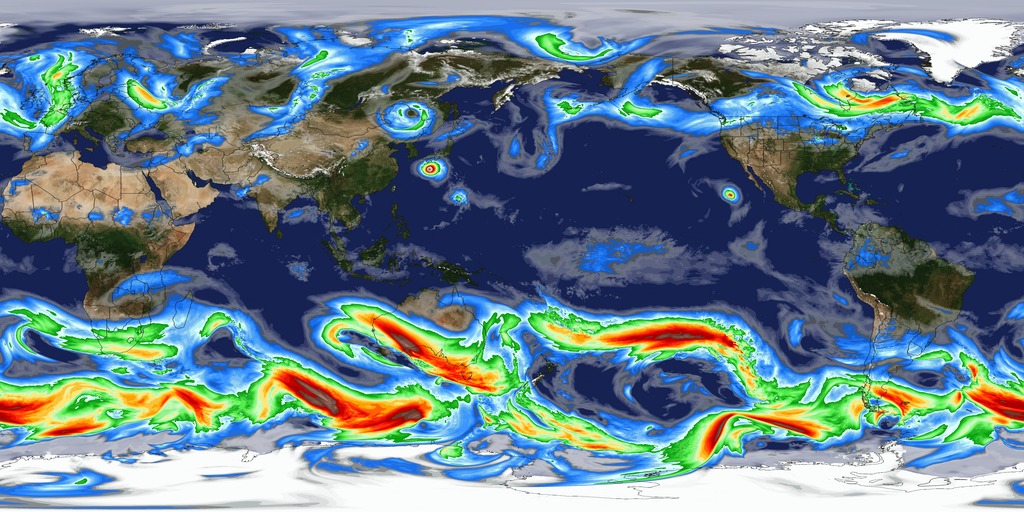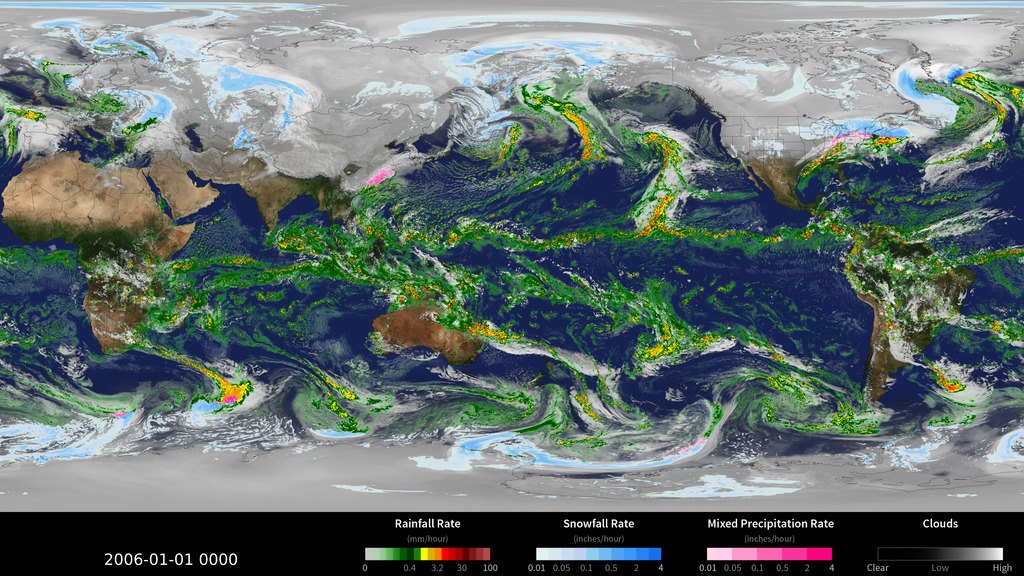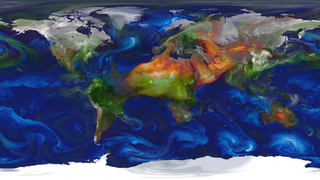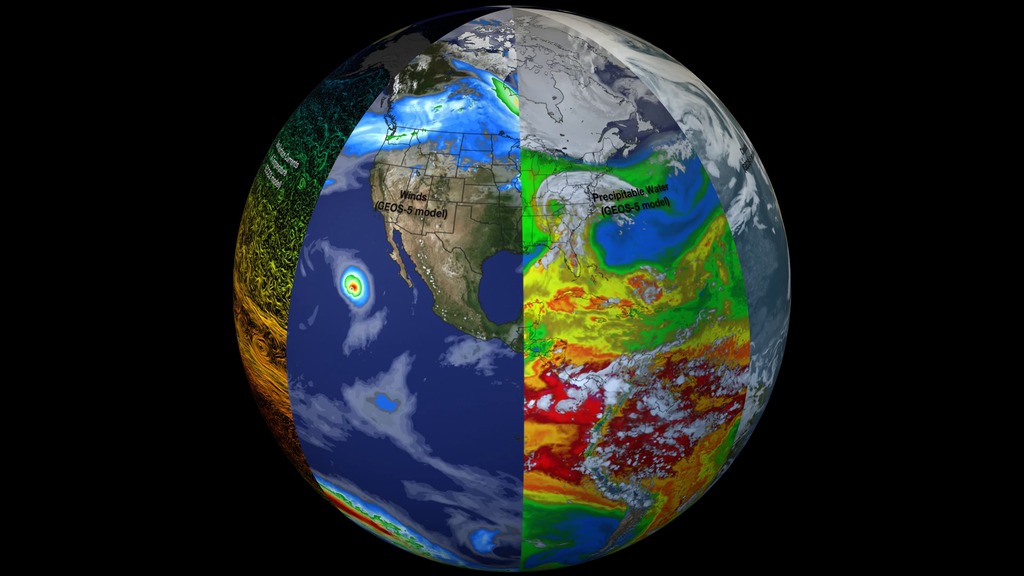Simulated Clouds and Precipitable Water
Clouds and precipitable water animation of Apr 1 - Jul 31, 2006.
To better understanding Earth’s hydrological cycle, energy budget, and climate, scientists study moisture and clouds in the atmosphere. This simulation, produced by the Goddard Earth Observing System Model Version 5 (GEOS-5), shows precipitable water and clouds at 7-kilometer resolution from April 1 to July 31, 2006. Precipitable water is the total amount of water vapor contained within a vertical column of the atmosphere. In other words, its how much water would result if all the water in that column precipitated as rain. The amount of precipitable water in the air is small in extremely arid areas and in locations where the temperatures are very low (e.g., polar regions). Simulations such as this one allow scientists to gain new insights into atmospheric humidity and how clouds and water vapor impact precipitation and surface temperature.
Credits
Please give credit for this item to:
NASA's Scientific Visualization Studio
-
Animator
- William Putman (NASA/GSFC)
-
Project support
- Eric Sokolowsky (Global Science and Technology, Inc.)
Release date
This page was originally published on Wednesday, December 10, 2014.
This page was last updated on Sunday, January 5, 2025 at 12:25 AM EST.

